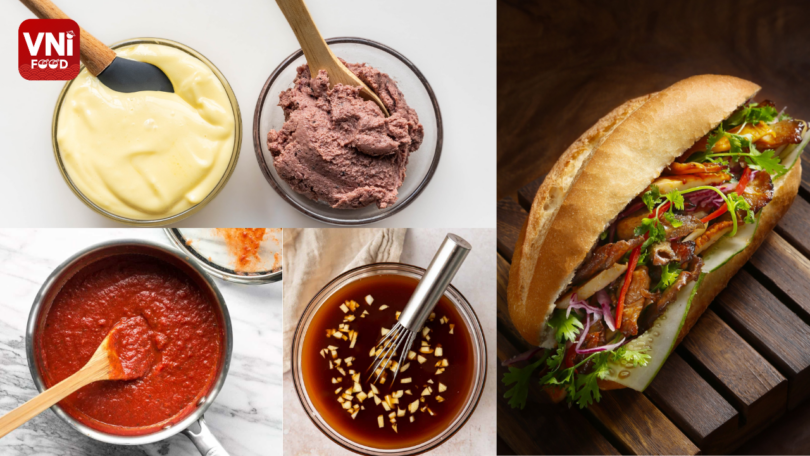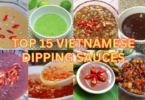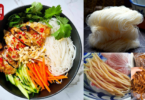Bright Spots in Vietnamese
Vietnamese cuisine is celebrated for its vibrant and diverse flavors, and Banh Mi is one of its most iconic dishes. This beloved Vietnamese sandwich has captured the hearts and taste buds of people around the world. One of the key elements that contribute to its unique and irresistible taste is the variety of sauces used. These sauces not only enhance the flavors of the ingredients but also create a harmonious blend that defines the essence of Banh Mi. This article aims to explore and detail the different types of sauces that elevate this humble sandwich to a global culinary sensation.
1. Mayonnaise
Mayonnaise is a thick, creamy sauce made from a blend of eggs, oil, and an acid like vinegar or lemon juice. Mayonnaise plays a crucial role in Banh Mi by adding a rich, creamy texture that balances the crunchiness of the baguette and the freshness of the vegetables. It acts as a binding agent, bringing all the components together in a harmonious bite.
Mayonnaise is typically spread generously on both halves of the baguette before adding other ingredients. Its smooth consistency ensures an even distribution of flavor throughout the sandwich.
Examples and Applications
- Banh Mi Thit Nguoi: Enhances the flavor of cold cuts and pickled vegetables.
- Banh Mi Ga Xe: Adds moisture and richness to shredded chicken.
- Banh Mi Cha Lua: Complements the savory taste of Vietnamese pork sausage.
How to Make Mayonnaise for Banh Mi
Creating homemade mayonnaise for Banh Mi ensures a fresh, rich flavor that enhances the overall taste of the sandwich. Here is a simple and detailed recipe for making mayonnaise at home.
Ingredients:
- 1 large egg yolk
- 1 teaspoon Dijon mustard
- 1 tablespoon white wine vinegar or lemon juice
- 1 cup neutral oil (such as vegetable or canola oil)
- Salt to taste
- A pinch of sugar (optional)
Instructions:
Ensure all ingredients are at room temperature for easier emulsification. In a large bowl, whisk together the egg yolk, Dijon mustard, and white wine vinegar or lemon juice until well combined. Start by adding a few drops of oil while continuously whisking to begin the emulsification process. Once the mixture starts to thicken, gradually add the remaining oil in a slow, steady stream while whisking vigorously. Keep whisking until all the oil is incorporated and the mixture has thickened to a creamy consistency. Season with salt to taste and a pinch of sugar if desired, adjusting the acidity with more vinegar or lemon juice if needed. The mayonnaise should be thick and glossy; if it is too thick, thin it with a few drops of water. Transfer the mayonnaise to an airtight container and store it in the refrigerator for up to a week.
2. Pate
Pâté is a rich, savory spread made from a blend of liver, fat, onions, and seasoned with various herbs and spices. In Banh Mi, pâté plays a vital role by adding a luxurious texture that complements the crunchiness of the baguette and enhances the flavors of the sandwich fillings. It acts as a flavor enhancer, bringing depth and richness to each bite.
Pâté is traditionally spread generously on the bottom half of the baguette before layering other ingredients. Its smooth consistency ensures a cohesive blend of flavors throughout the sandwich.
Examples and Applications
- Banh Mi Thit Nguoi: Combines well with cold cuts and pickled vegetables, enriching their savory notes.
- Banh Mi Heo Quay: Elevates roasted pork with its creamy texture and robust flavor.
- Banh Mi Xiu Mai: Enhances Vietnamese meatballs with its rich, meaty profile.
How to Make Pâté for Banh Mi
Creating homemade pâté ensures a fresh, authentic flavor that enhances the overall taste of the sandwich. Here’s a simple and detailed recipe for making pâté at home:
Ingredients:
- 1 cup chicken liver, cleaned and trimmed
- 1/2 cup pork fat, diced
- 1 small onion, finely chopped
- 2 cloves garlic, minced
- 1/4 teaspoon ground black pepper
- 1/4 teaspoon salt
- 1 tablespoon fish sauce
- 2 tablespoons butter
- 1 tablespoon vegetable oil
Instructions:
Ensure all ingredients are at room temperature for easier blending. In a skillet over medium heat, sauté finely chopped onion and minced garlic in a tablespoon of butter until softened. Add cleaned and trimmed chicken liver to the skillet and cook until browned on the outside but slightly pink inside, about 3-4 minutes per side. Optionally, deglaze the skillet with brandy or cognac, scraping up any browned bits. Transfer the cooked liver, onion, garlic, and pan juices to a food processor. Add softened butter, salt, and pepper. Blend until smooth and creamy. Transfer the pâté to a container, refrigerate until firm for at least 2 hours or overnight, and serve chilled or at room temperature.
3. Soy Sauce
Soy sauce is a dark, salty condiment made from fermented soybeans, wheat, salt, and water. In Banh Mi, soy sauce enriches the sandwich with its deep umami flavor, enhancing the savory components while providing a subtle salty undertone.
Soy sauce is typically drizzled over the filling or mixed with other sauces, ensuring a harmonious blend of flavors throughout the sandwich.
Examples and Applications
- Banh Mi Thit Nuong: Elevates the taste of grilled pork with its savory richness.
- Banh Mi Xa Xiu: Complements Chinese-style barbecue pork with its robust flavor.
- Banh Mi Heo Quay: Adds depth to roast pork, creating a satisfying umami profile.
How to Make Soy Sauce in Banh Mi
Ingredients:
- 2 cups soybeans
- 2 cups wheat
- 1 cup salt
- 4-5 liters water
Instructions:
Making soy sauce from scratch is a complex and time-consuming process that typically involves fermentation of soybeans, wheat, salt, and water over several months to develop its distinct flavor. Due to its intricate nature and lengthy fermentation period, producing soy sauce at home is not practical for most individuals. It’s widely available commercially and is best purchased from trusted brands to ensure authenticity and quality. For Banh Mi, simply purchase a good-quality soy sauce to enjoy its rich umami flavor and enhance the taste of your sandwich.
4. Chili Sauce
Chili sauce is a spicy condiment made from chili peppers, vinegar, sugar, and garlic. In Banh Mi, chili sauce adds a fiery kick that enhances the sandwich with its bold and tangy flavor, stimulating the palate with every bite.
Chili sauce is typically added as a final touch, either drizzled over the sandwich or served on the side for dipping, allowing diners to customize the level of spiciness to their preference.
Examples and Applications:
- Banh Mi Ga Xe: Intensifies the flavor of shredded chicken with its spicy heat.
- Banh Mi Thit Nuong: Adds a zesty kick to grilled pork, elevating its savory profile.
- Banh Mi Ca Hpp: Combines well with canned fish, creating a bold and flavorful sandwich.
How to Make Chili Sauce in Banh Mi
Ingredients:
- 500g fresh red chilies (Thai bird’s eye chilies or red jalapeños for milder heat)
- 4 cloves garlic, minced
- 1/4 cup white vinegar
- 2 tablespoons sugar
- 1 teaspoon salt
- 1/2 cup water
Instructions:
To make chili sauce, start by washing and preparing 500g of fresh red chilies, removing the stems and optionally deseeding them for a milder sauce. In a blender, combine the chilies with 4 cloves of minced garlic, 1/4 cup of white vinegar, 2 tablespoons of sugar, 1 teaspoon of salt, and 1/2 cup of water. Blend until smooth. Transfer the mixture to a saucepan and bring it to a simmer over medium heat. Reduce the heat to low and simmer for 15-20 minutes, stirring occasionally, until the sauce thickens slightly. Let it cool, taste, and adjust seasoning if necessary. Transfer the chili sauce to sterilized jars or bottles, seal tightly, and store in the refrigerator for several weeks.
Final Words
In conclusion, the diverse array of sauces used in Vietnamese Banh Mi sandwiches highlights the culinary creativity and rich flavors of Vietnamese cuisine. From the creamy richness of mayonnaise to the bold spiciness of chili sauce and the savory depth of soy sauce, each sauce plays a crucial role in enhancing the sandwich’s taste profile.
Next time you indulge in a Banh Mi, take a moment to appreciate how these sauces transform simple ingredients into a symphony of flavors, reflecting Vietnam’s vibrant street food culture and culinary heritage. Embrace the versatility of Banh Mi sauces to tailor your sandwich to personal taste preferences, making each bite a celebration of Vietnamese flavors and gastronomic innovation.









Leave a Comment